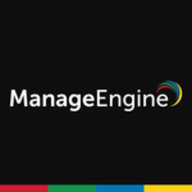

ManageEngine Applications Manager and Azure Monitor are both powerful monitoring solutions tailored for enterprise environments. ManageEngine has the upper hand in pricing and support according to user reviews, while Azure Monitor is noted for its extensive features that lead to higher overall satisfaction.
Features: ManageEngine Applications Manager offers comprehensive monitoring capabilities, alerting mechanisms, and a user-friendly setup and navigation. Azure Monitor provides advanced analytics, deep integration with Microsoft services, and broader compatibility.
Room for Improvement: ManageEngine users desire enhanced reporting and additional integration options. Azure Monitor users seek improvements in real-time alerts and a reduction in complexity. ManageEngine improvements focus on expanding functionality while Azure Monitor users emphasize usability enhancements.
Ease of Deployment and Customer Service: ManageEngine is praised for straightforward deployment and very responsive customer support. Azure Monitor has a steeper learning curve but benefits from proficient customer service as part of Microsoft's support ecosystem.
Pricing and ROI: ManageEngine users appreciate the lower setup costs and quick ROI based on its pricing model. Azure Monitor is more expensive but is considered worth the investment due to its extensive features and seamless scalability.
| Product | Market Share (%) |
|---|---|
| Azure Monitor | 4.9% |
| ManageEngine Applications Manager | 0.6% |
| Other | 94.5% |


| Company Size | Count |
|---|---|
| Small Business | 23 |
| Midsize Enterprise | 6 |
| Large Enterprise | 29 |
| Company Size | Count |
|---|---|
| Small Business | 4 |
| Midsize Enterprise | 4 |
| Large Enterprise | 9 |
Azure Monitor is a comprehensive monitoring solution offered by Microsoft Azure. It provides a centralized platform for monitoring the performance and health of various Azure resources, applications, and infrastructure.
With Azure Monitor, users can gain insights into the availability, performance, and usage of their applications and infrastructure. The key features of Azure Monitor include metrics, logs, alerts, and dashboards. Metrics allow users to collect and analyze performance data from various Azure resources, such as virtual machines, databases, and storage accounts.
Logs enable users to collect and analyze log data from different sources, including Azure resources, applications, and operating systems. Azure Monitor also provides a robust alerting mechanism that allows users to set up alerts based on specific conditions or thresholds. These alerts can be configured to notify users via email, SMS, or other notification channels. Additionally, Azure Monitor offers customizable dashboards that allow users to visualize and analyze their monitoring data in a personalized and intuitive manner.
Azure Monitor integrates seamlessly with other Azure services, such as Azure Automation and Azure Logic Apps, enabling users to automate actions based on monitoring data. It also supports integration with third-party monitoring tools and services, providing flexibility and extensibility.
Overall, Azure Monitor is a powerful and versatile monitoring solution that helps users gain deep insights into the performance and health of their Azure resources and applications. It offers a wide range of features and integrations, making it a comprehensive solution for monitoring and managing Azure environments.
ManageEngine Applications Manager is an application performance management (APM) solution that is designed to give users deep insights into both the way that their applications perform and the way that users of those applications experience them. Organizations can use this solution to identify areas where their critical applications are lacking and address them before there are any negative repercussions. ManageEngine Applications Manager is the kind of tool that companies of all sizes can use to keep their applications running in the best way possible.
ManageEngine Applications Manager Benefits
Some of the ways that organizations can benefit by deploying ManageEngine Applications Manager include:
ManageEngine Applications Manager Features
Some of the many useful features ManageEngine Applications Manager has to offer include:
Reviews from Real Users
ManageEngine Applications Manager is a solution that stands out when it is compared to many of its competitors. It is part of a complete suite of management tools that users can take advantage of. The way that ManageEngine Applications Manager keeps up to date with a regular schedule of software updates enables organizations to manage their applications without worrying that they are missing any important capabilities or features. If any feature is absent, users can integrate the solution with other monitoring solutions. ManageEngine Applications Manager regularly undergoes updates that ensure that users have access to all of the latest features and patches.
Rodrigo T., the CEO of AXIOVISTA spa, writes, “This solution is a part of a complete suite of management tools. So, it can be integrated with other solutions for monitoring networks, which is very important. You can expand it or interconnect it with many other tools, which is a powerful feature.”
Syed A., the enterprise senior account manager of sales at a tech services company, writes, “Our customers appreciate that ManageEngine sends regular updates, upgrading their software several times a year.”
We monitor all Application Performance Monitoring (APM) and Observability reviews to prevent fraudulent reviews and keep review quality high. We do not post reviews by company employees or direct competitors. We validate each review for authenticity via cross-reference with LinkedIn, and personal follow-up with the reviewer when necessary.